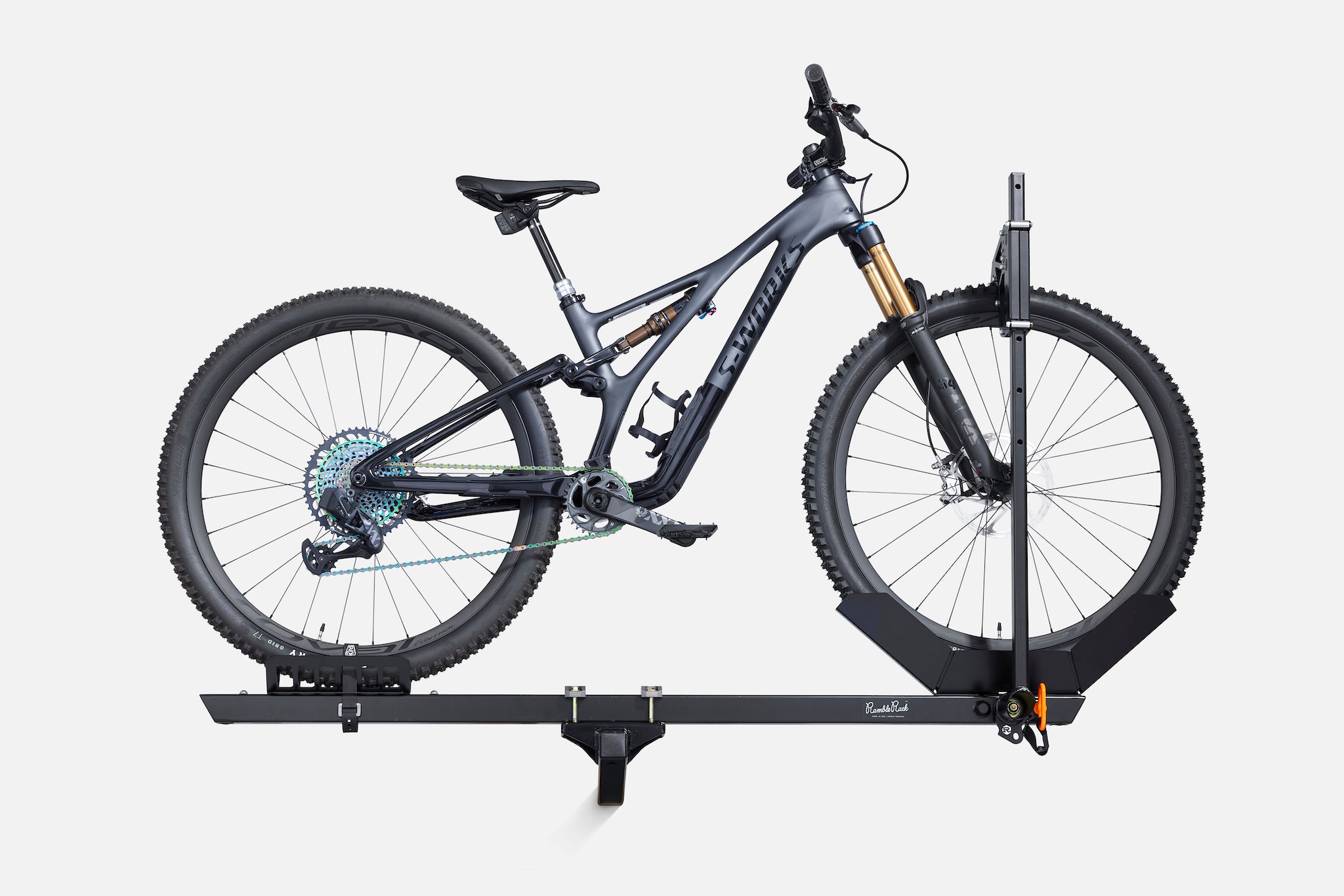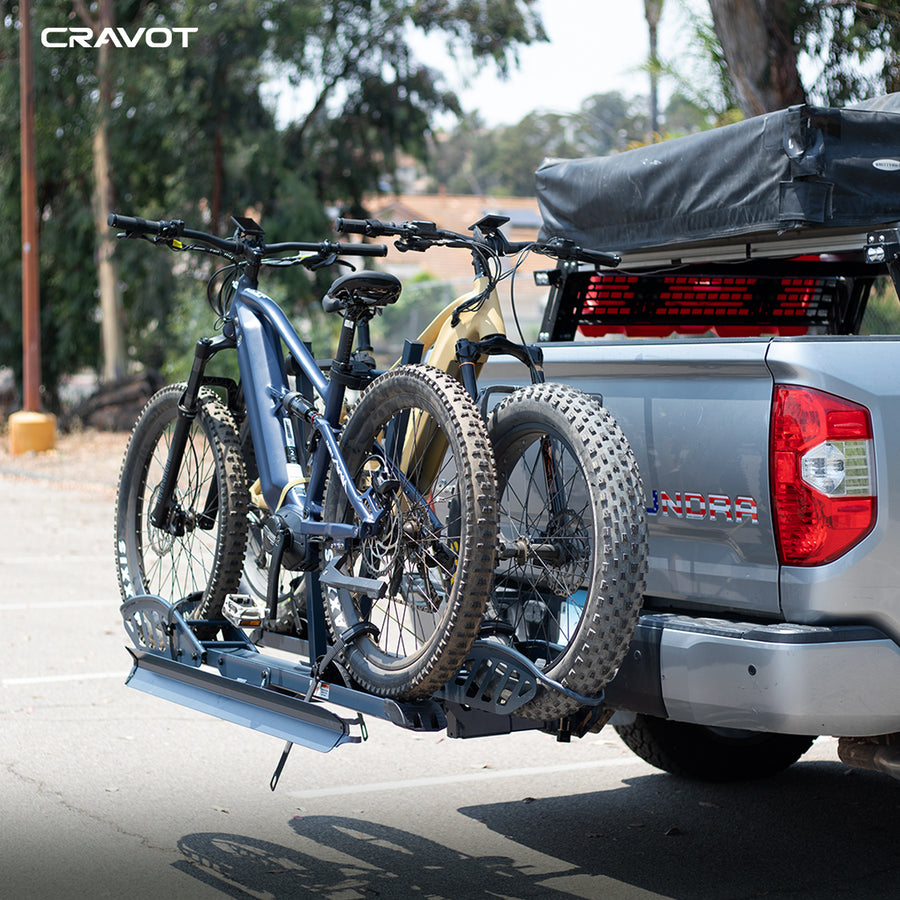Six Qualities to Look for in a High-Quality Hitch Bike Rack
Check Out the Different Kinds of Bike Shelf and Their Practical Applications for Biking Fanatics
The selection of bike Racks readily available today accommodates the diverse needs of cycling lovers. From freestanding to wall-mounted alternatives, each design uses special advantages for storage and transport. Portable Racks also offer flexibility for those on the move. However, choosing the perfect type needs mindful factor to consider of specific demands. Understanding these aspects can make a significant difference in both convenience and safety and security for bikers. What are the key considerations when selecting a bike rack?
Understanding Bike Shelf Types
Various kinds of bike Racks accommodate the varied demands of cyclists. Among one of the most typical are freestanding racks, typically discovered in urban areas, which enable multiple bikes to be protected in a compact area. Wall-mounted Racks offer those with limited floor area, supplying an efficient solution for home storage. In addition, portable bike shelfs, developed for ease of transportation, attract bikers who frequently take a trip.

Hitch-Mounted Bike Racks
Hitch-mounted bike Racks supply a sensible option for moving bikes, yet understanding their installation procedure is important for efficient use. Individuals need to likewise take into consideration the weight ability of these Racks to ensure security and stability while taking a trip. Furthermore, compatibility with various lorry kinds plays a significant function in determining the appropriate shelf for private demands.
Setup Process Overview
When picking a hitch-mounted bike rack, understanding the installment process is necessary for assuring safety and convenience. First, the customer needs to confirm compatibility between the rack and the car's drawback receiver. The majority of Racks are designed for either 2-inch or 1.25-inch receivers. After selecting the ideal shelf, the installation begins with protecting the shelf right into the drawback receiver and tightening the drawback pin or screw to stop activity. Proper alignment is important to establish the rack does not block tail lights or license plates. When mounted, it is advisable to check for security by applying small stress to the rack. Adhering to the maker's directions will certainly guarantee an effective installation, advertising a secure cycling experience on the roadway.
Weight Ability Considerations

Compatibility With Automobile Types
Selecting the appropriate bike rack includes confirming compatibility with numerous car kinds. Hitch-mounted bike Racks are developed to affix to the rear hitch receiver of an automobile, making them ideal for a vast array of vehicles, trucks, and suvs. However, it is important to inspect the drawback course and weight capability to confirm a correct fit. A lot of hitch-mounted Racks work with 1.25-inch and 2-inch receivers, fitting vehicles geared up with suitable lugging capacities. Furthermore, customers ought to consider their lorry's elevation and layout, as some Racks might obstruct rear access or need extra clearance. Eventually, understanding automobile requirements verifies that biking fanatics can safely move their bikes without compromising safety and security or performance.
Trunk-Mounted Bike Racks
Trunk-mounted bike Racks supply a functional service for bikers looking for an effective method to move their bikes. Comprehending the installment process is vital for perfect usage, as incorrect configuration can result in security concerns. In addition, thinking about the weight capability of these Racks guarantees that they can securely hold the bikes without threat of damages or failure during transportation.
Setup Refine Review
Lots of biking lovers value the ease of trunk-mounted bike Racks for their simplicity of usage and flexibility. The installment process typically starts with unpacking the shelf and acquainting oneself with its elements. The majority of Racks come with flexible straps and hooks designed to secure them to the car's trunk or hatch. Individuals ought to confirm the rack is positioned correctly, straightening it with the vehicle's shapes for security. Following the producer's guidelines, the bands are then tightened safely, assuring a tight fit. It's essential to inspect that the shelf does not block the lorry's lights or permit plate. Confirming that all links are safe and secure prior to packing bikes is vital for secure transport. Appropriate setup boosts both safety and security and effectiveness during cycling journeys.
Weight Ability Considerations
When considering a bike rack for delivering bikes, weight capacity is a crucial variable that can not be ignored. Trunk-mounted bike Racks commonly have weight restrictions that differ relying on the version and layout. It is crucial for individuals to inspect these requirements to ensure they do not exceed the advised weight, as doing so can compromise both safety and security and vehicle stability. Most trunk-mounted Racks can support a couple of bikes, with a mixed weight capacity ranging from 70 to 120 pounds. Bikers should additionally take into consideration the weight of their bicycles, particularly if they possess heavier models like electrical bikes. Correctly matching the shelf's weight capacity with the bikes' weights guarantees a safe and safe transport experience.
Roof-Mounted Bike Racks
Roof-mounted bike Racks offer a structured service for delivering bicycles, giving cyclists with the advantage of maximizing freight space. These Racks are created to hold bikes securely atop the vehicle, enabling for easy access to the back of the vehicle and protecting against blockages to the permit plate or tail lights. They are optimal for individuals that regularly take a trip with their bikes, as they can fit numerous bike styles and dimensions.
Installation generally includes affixing the shelf to the lorry's bars, making certain a secure and steady fit. Roof-mounted Racks are usually aerodynamic and light-weight, which can cause enhanced gas performance compared to other kinds of shelfs. Nevertheless, users should take into consideration the height of their car when filling and dumping bikes, as well as prospective challenges when going into garages or low-clearance locations. On the whole, roof-mounted bike Racks use a functional and reliable choice for serious cyclists on the go
Wall-Mounted Bike Racks
Wall-mounted bike Racks supply a reliable option for bicyclists seeking to maximize restricted room while firmly storing their bikes. These Racks are excellent for urban residents or those with little garages, as they raise bikes off the ground and make use of upright space. Made from sturdy products, wall-mounted options can suit numerous bike types, consisting of roadway, hill, and crossbreed bikes.
Installation is straightforward, allowing individuals to install them in garages, basements, and even outside spaces. Several layouts enable one E Bike Rack or several bikes, making them functional for individual or family members usage. Additionally, some wall-mounted Racks included integrated locks or safety features to prevent burglary, enhancing assurance for cyclists.
Portable Bike Racks
Portable bike Racks use bicyclists a practical and versatile solution for delivering their bicycles. These Racks are designed for very easy installment and removal, making them ideal for those who need to often switch in between areas or vehicles. Small and normally light-weight, mobile bike Racks can be conveniently saved in a trunk or garage, relieving the problem of irreversible setups.
There are different sorts of mobile bike shelfs, including hitch-mounted, trunk-mounted, and roof-mounted options, each satisfying various automobile kinds and cyclist choices. Hitch-mounted Racks give stability and access, while trunk-mounted Racks are typically extra versatile and budget-friendly. Roof-mounted Racks are excellent for making best use of cargo space but may call for some lifting.
Choosing the Right Bike Shelf for Your Requirements
Exactly how can one determine the most effective bike rack to match their specific biking demands? Identifying the best bike shelf includes assessing numerous elements. First, one should consider the kind of vehicle used for transport, as Racks are created for various placing systems, such as trunk, roofing system, or hitch. Next, the number of bikes to be lugged is vital; some Racks fit only one, while others can hold numerous bikes efficiently. Additionally, identifying the weight and framework style of the bikes is substantial, as specific Racks are much better suited for larger or distinctively designed bicycles. Lastly, designated use ought to be taken into consideration; regular tourists might favor a more portable alternative, while occasional individuals may prioritize simpleness and convenience of setup. By meticulously weighing these considerations, people can select a bike rack that satisfies their requirements and boosts their cycling experience.

Regularly Asked Inquiries
Can Bike Racks Accommodate Different Bike Sizes and Styles?
Bike Racks differ in style, allowing holiday accommodation for different bike dimensions and designs. Some Racks include adjustable elements, while others are especially customized for sure bicycles, making certain safe storage and very easy accessibility no matter the bike's specs.
How Do I Properly Protect My Bike on a Shelf?
To correctly safeguard a bike on a rack, one should ensure the frame and wheels are snugly attached utilizing locks or straps, examining for stability and protecting against activity during transportation to avoid damages.
Are Bike Racks Easy to Install and Eliminate?
Bike Racks vary in setup intricacy, but several are designed for user-friendliness. Detachable versions usually offer uncomplicated setup and removal, while irreversible installations might call for devices and more time, depending upon the details design.

What Products Are Bike Racks Typically Made From?
Bike Racks are typically made from materials such as light weight aluminum, plastic, and steel. Bike Rack. Steel offers toughness and stamina, while aluminum provides lightweight transportability. Plastic alternatives are usually made for simplicity of use and affordability
Do Bike Racks Affect Fuel Efficiency When Driving?
When driving is significant, the question of whether bike Racks affect fuel performance. Research studies suggest that bike Racks can increase wind resistant drag, potentially bring about decreased gas performance, particularly at higher rates or with added weight.
After choosing the suitable shelf, the setup begins with safeguarding the shelf right into the hitch receiver and tightening up the hitch pin or screw to stop movement. Roof-mounted Racks are light-weight and frequently aerodynamic, which can lead to enhanced gas effectiveness compared to various other types of shelfs. Hitch-mounted Racks offer security and availability, while trunk-mounted Racks are often much more flexible and affordable. Next off, the number of bikes to be brought is important; some Racks suit only one, while others can hold numerous bikes efficiently. Bike Racks differ in design, allowing accommodation for different bike sizes and designs.